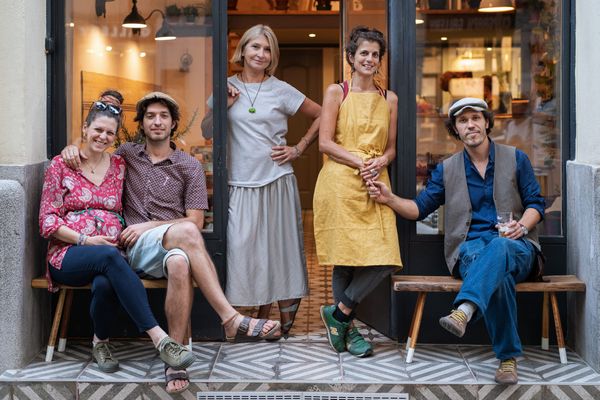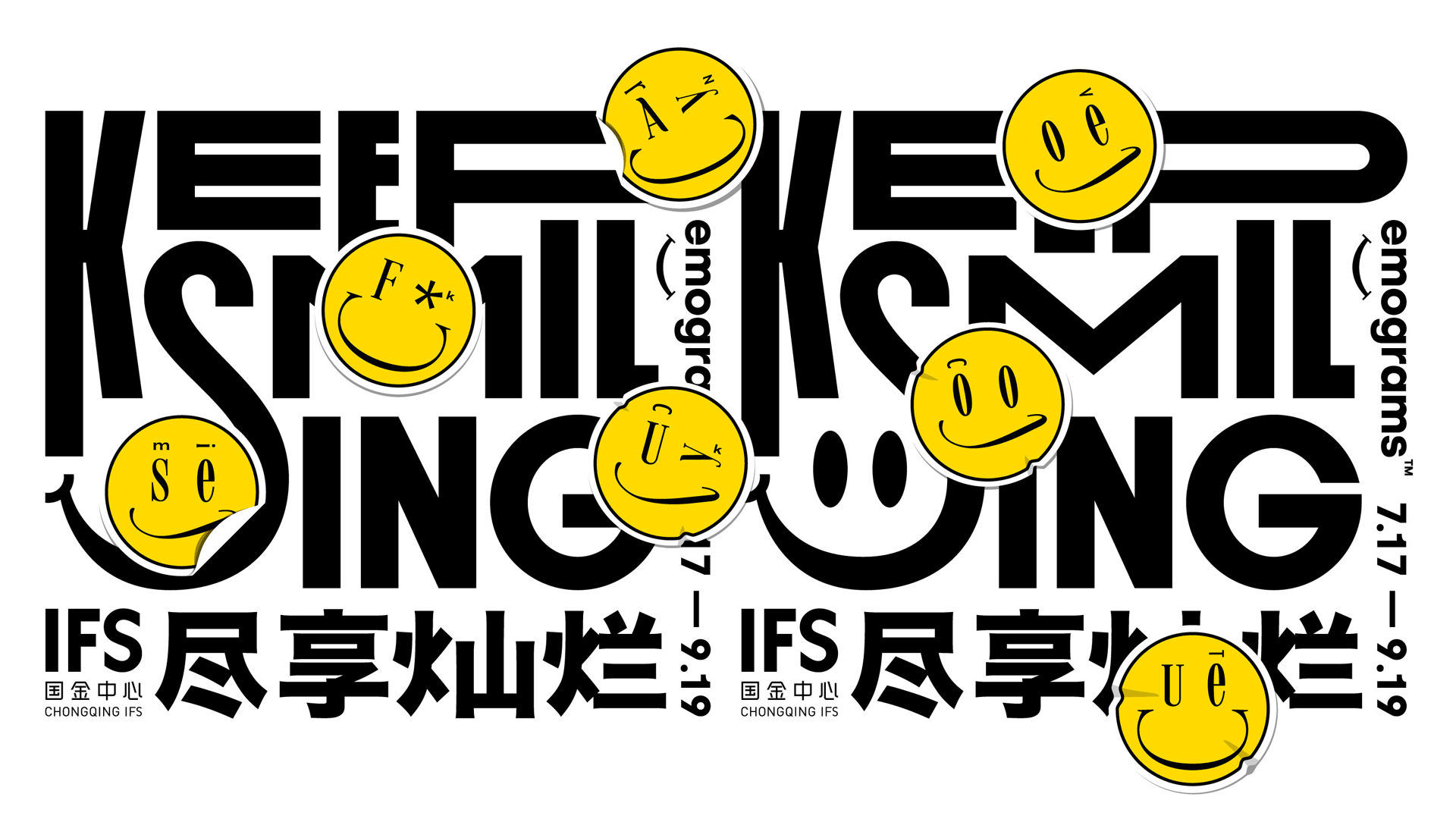Miklós Kiss’s emograms bordering between visual art and design were showcased in China this time, in the city of Chongqing. Evocative of the circle of life, the installation aims to cheer us up after the pandemic.
The emograms created by Miklós Kiss have come a long way. In 2019, they debuted at the Gwangju Design Biennale, in the framework of the interactive installation titled Ball.Room., and were also visible in Korea, in the form of a solo exhibition at LOTTE Gallery, Incheon in 2020. Since then, being put into a little bit different context, the emograms keep transforming, and their appearance keeps becoming more and more sophisticated and loveable.
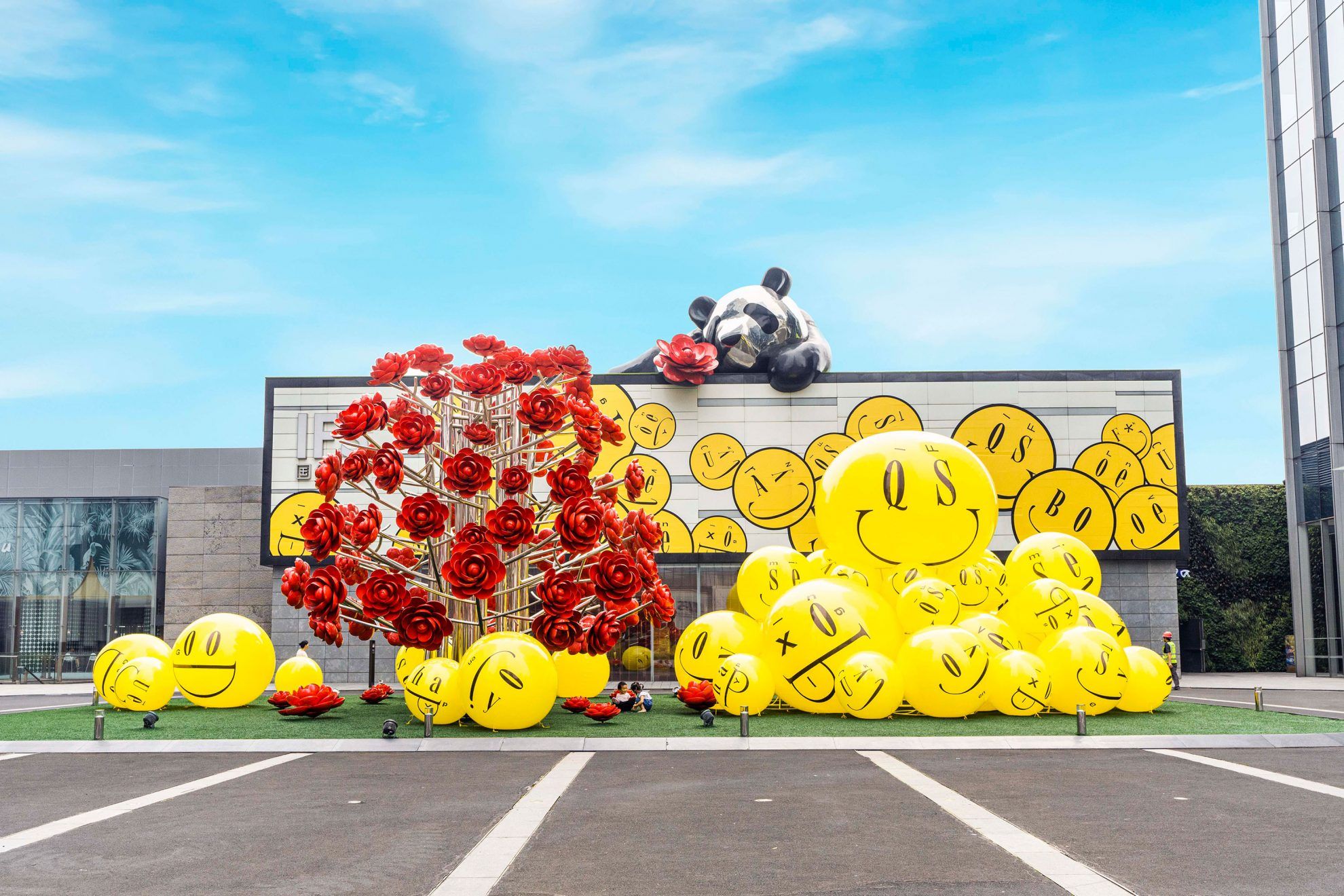
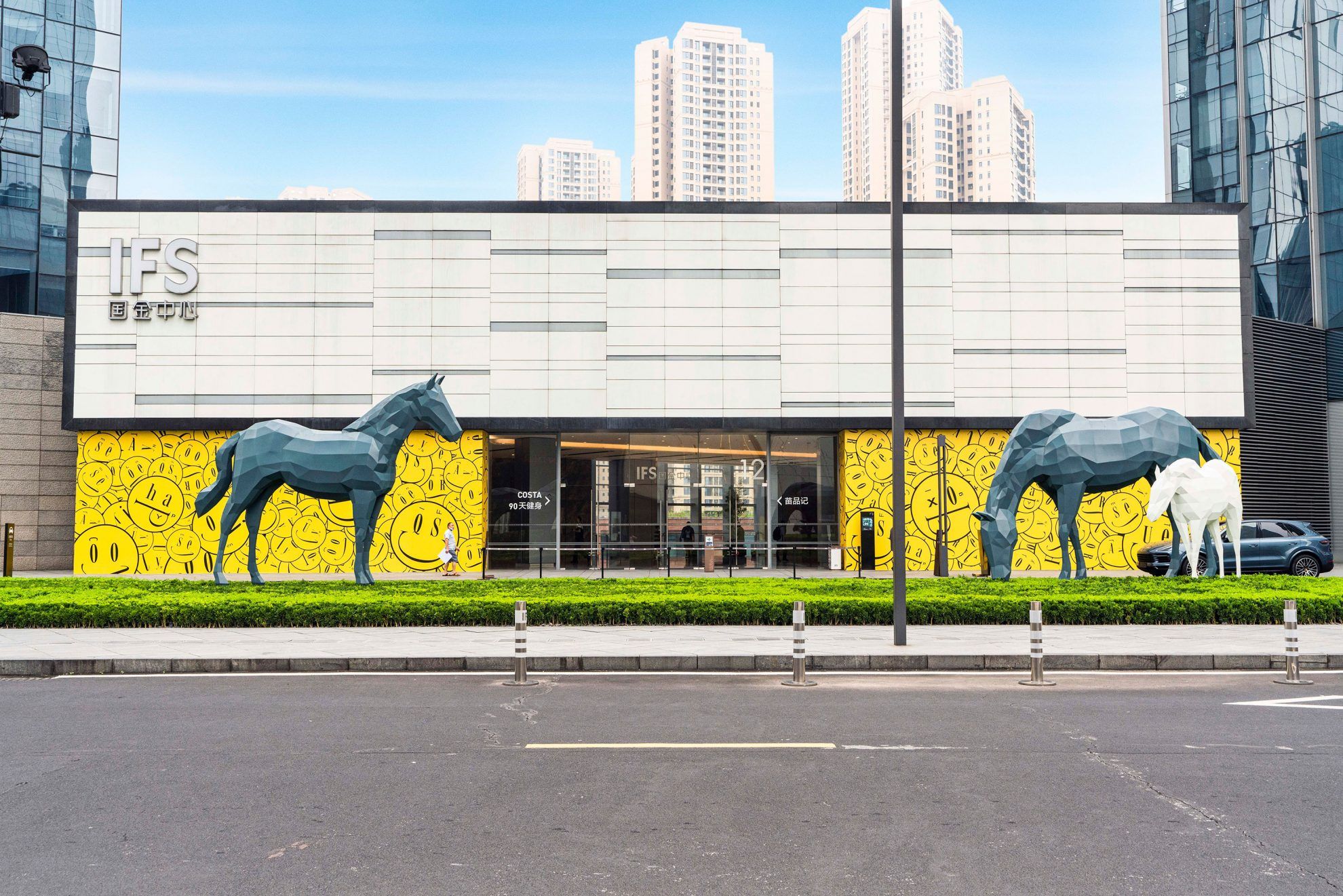
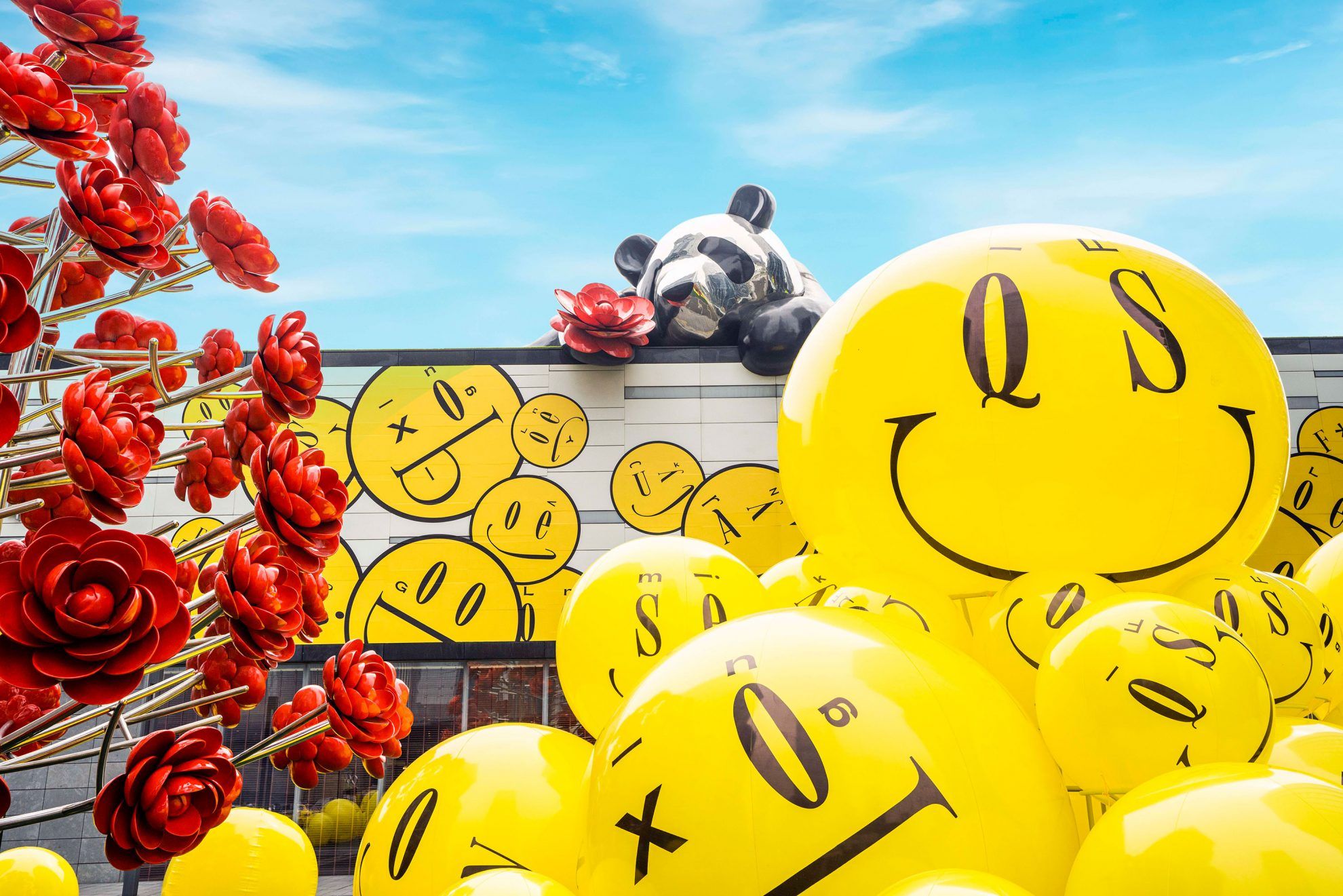
And what’s an emogram, you ask?
As we have already mentioned in our article on Ball.Room. reloaded, Miklós’s concept based on emojis and smileys dates back to 2015, when Oxford Dictionaries chose an emoji pictogram as the word of the year (emoji is of Japanese origins, „e” means image, while „moji” means letter or character – the Ed). Miklós found it exciting how we used to display written communication in the form of drawings originally and how we then replaced them by letters, but with the growing popularity of digital communication, we transformed them into pictograms once again.
“I put the lost letters back into the emojis, thus creating a new version of the smiley containing a word puzzle. This is how emograms saw the light, which, in addition to the smiley faces, changed into funny faces waiting to be solved” – Miklós told us.
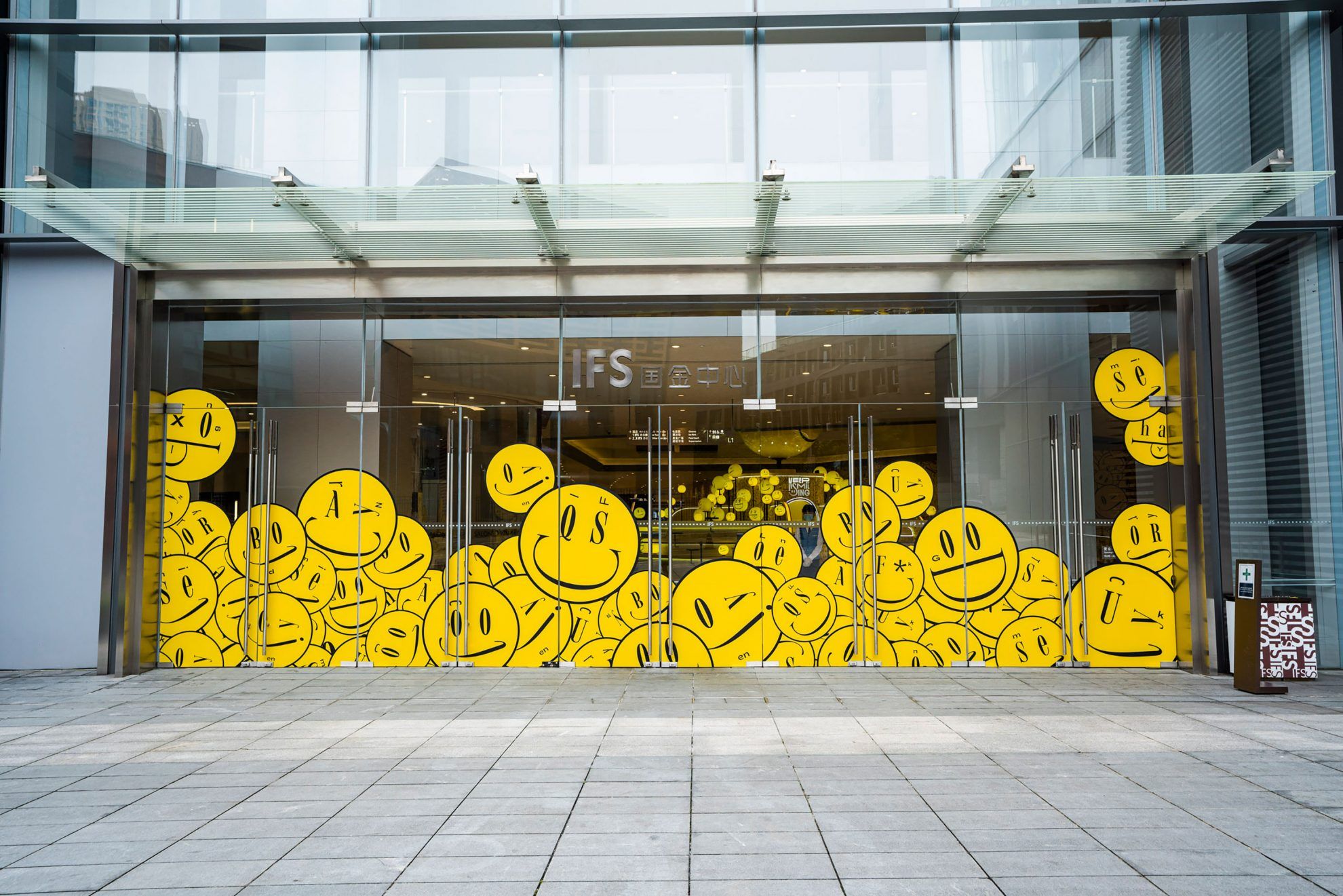

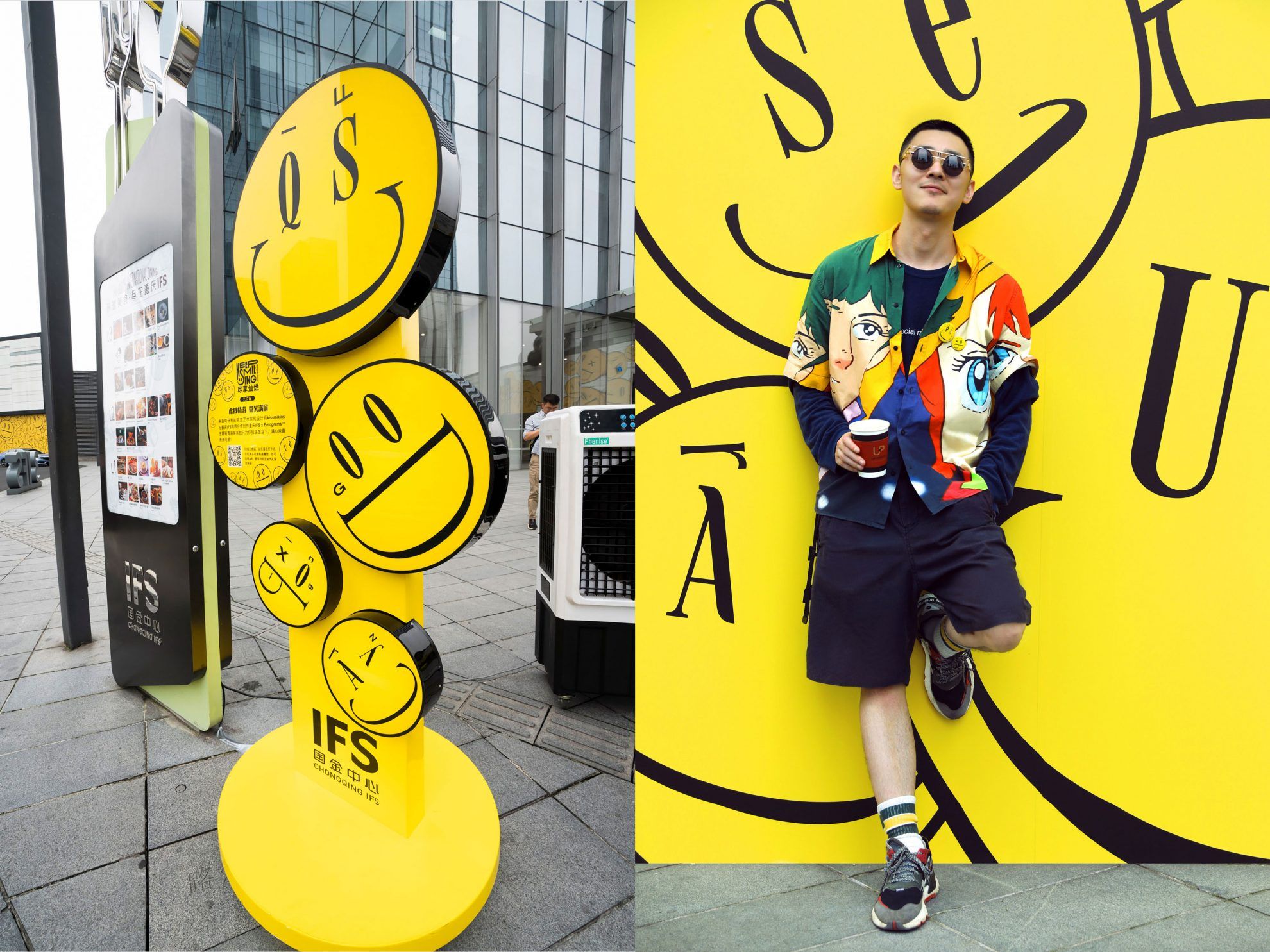
Keep Smiling
Chongqing International Finance Square (CQIFS) in China is one of the largest integrated development projects of the region, giving home to a shopping center in addition to skyscrapers, office buildings and a luxury hotel. It also hosts exhibitions from time to time. The curators of CQIFS read about Miklós’s emograms in an article published in Chinese magazine Brand, and they commissioned the designer based on the article to create an outdoor and an indoor installation together with CQIFS designers. This is how the exhibition titled “Keep Smiling” came to life.
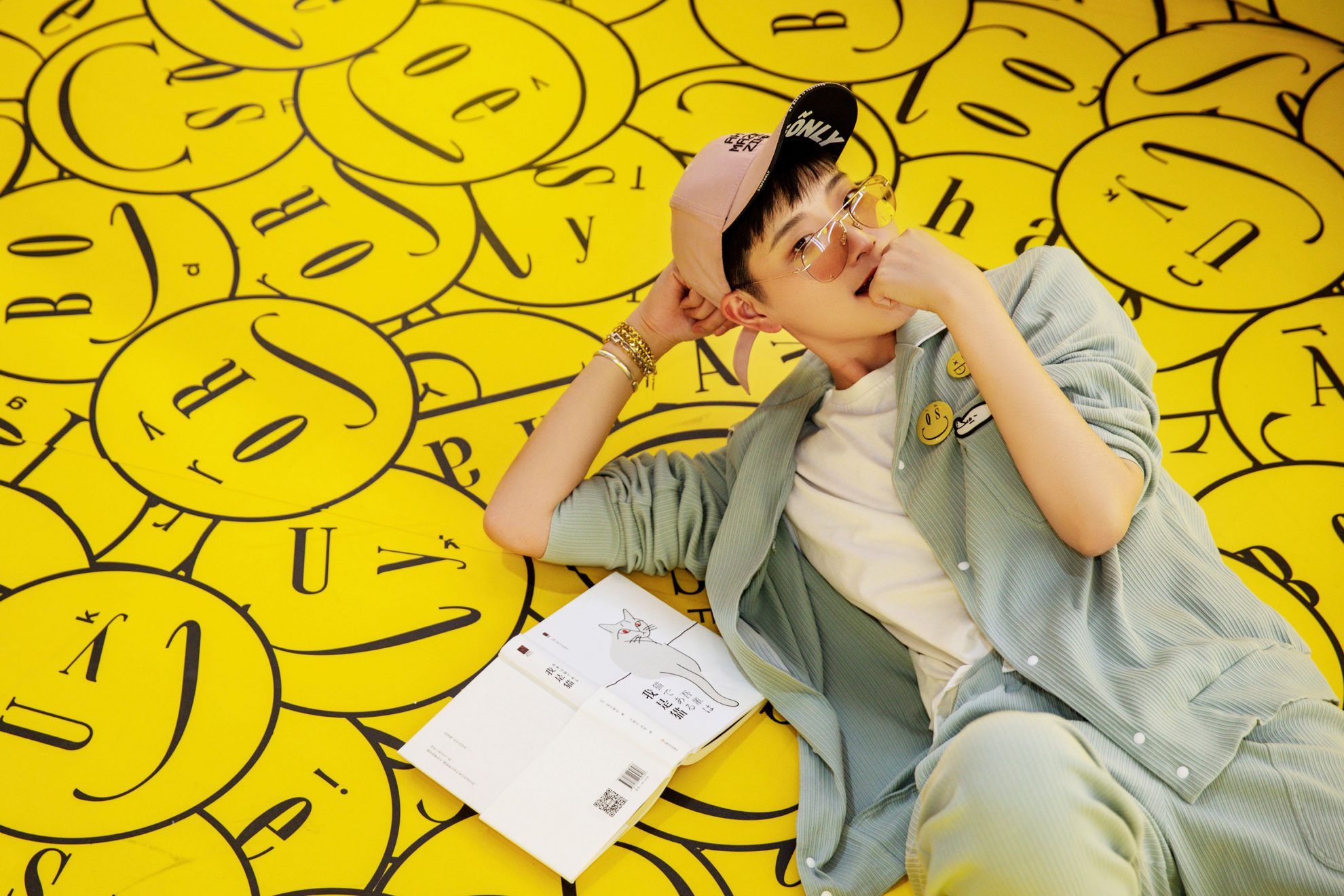
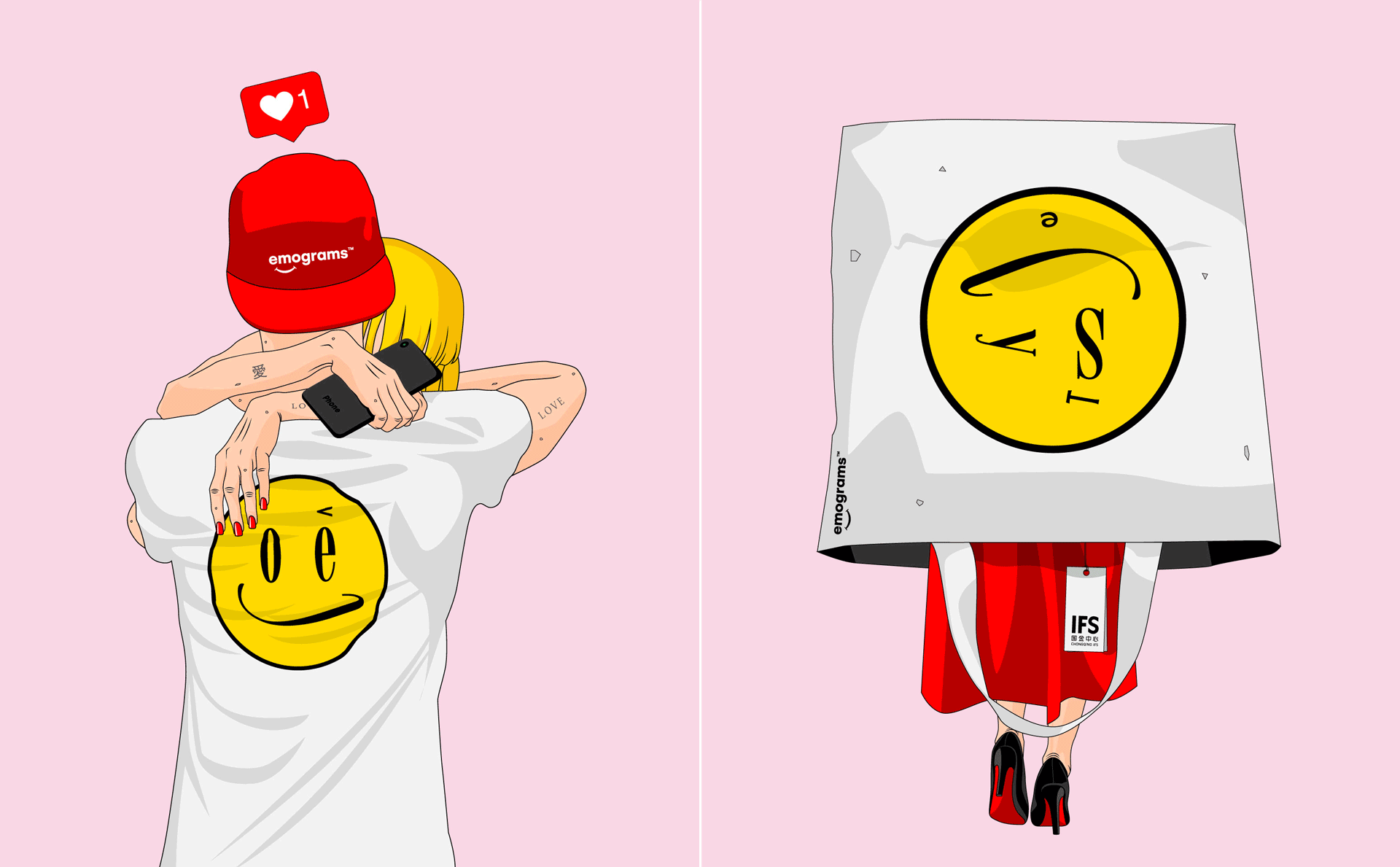

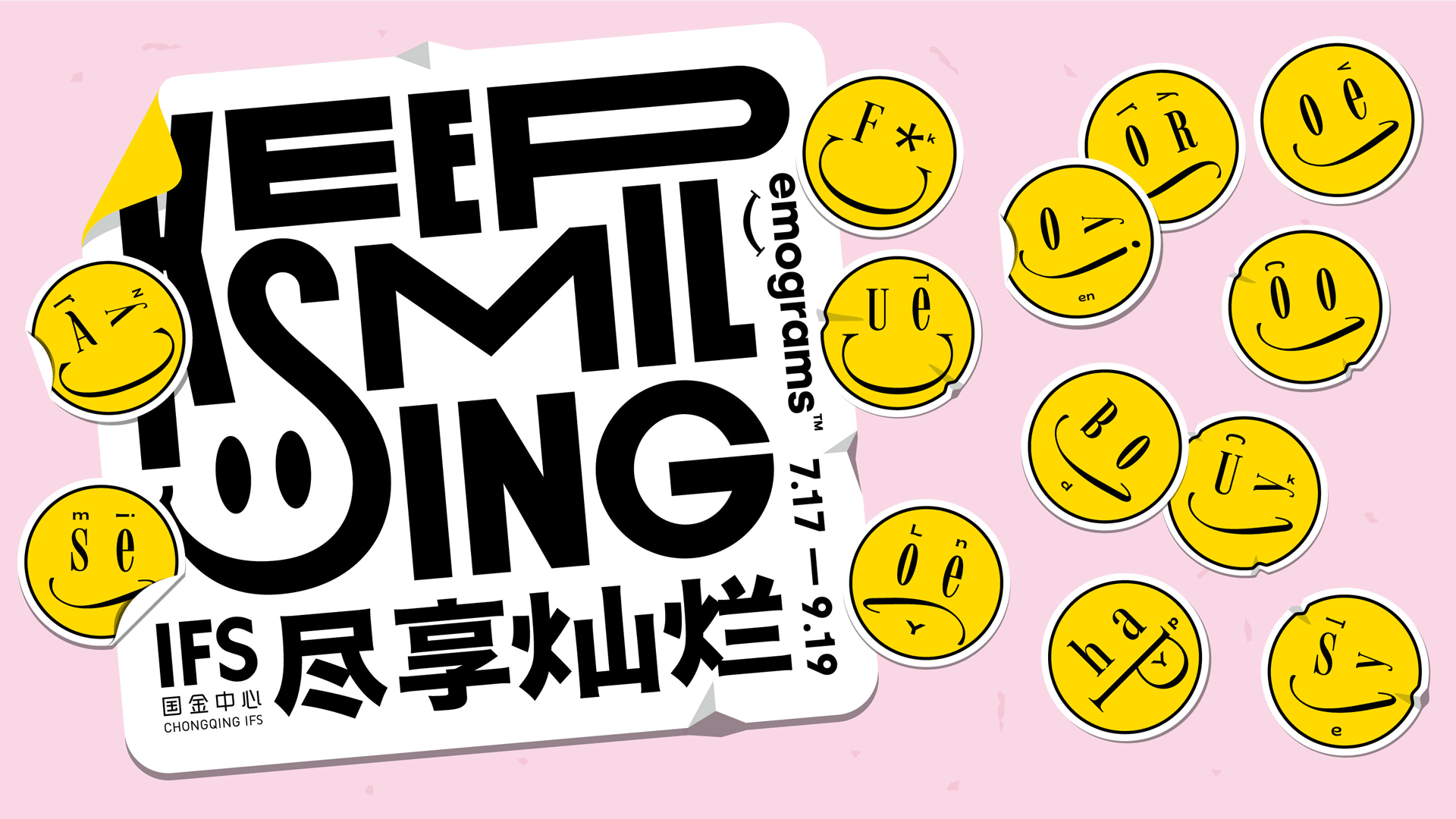
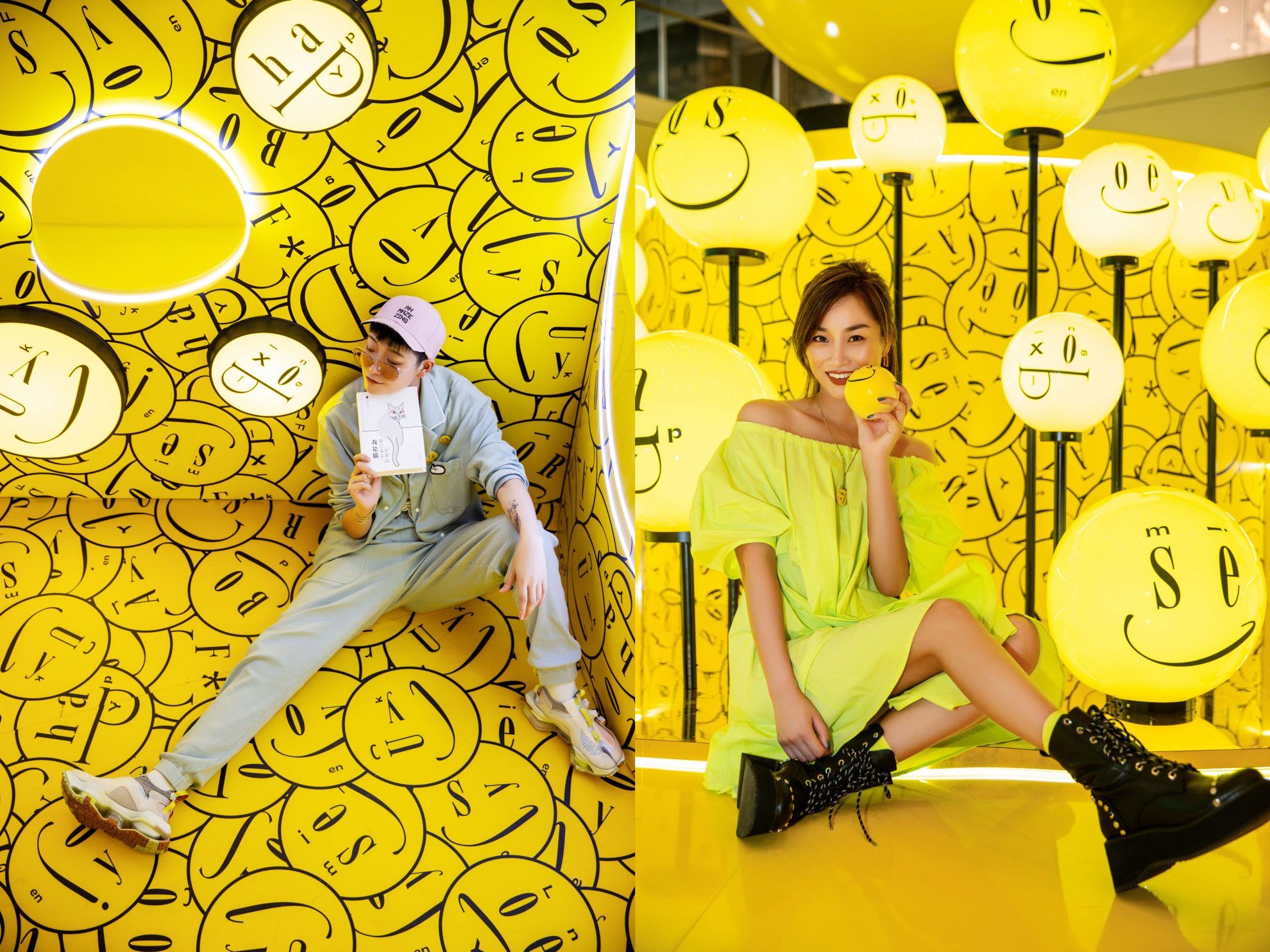
“Due to their size, the two installations showcased in Chongqing are a bit like monuments. It was also an important milestone that here I also created a face made of the word pinyin (the official romanization system for Standard Chinese), alluding to one of Chongqing’s notoriously strong pepper types. The Keep Smiling souvenirs are also more elaborate compared to previous exhibitions” – Miklós added.
“The indoor installation is a café and a souvenir shop, which transformed the emograms into a pop culture phenomenon. People don’t interact with them in the exhibition space anylonger, but in the course of an everyday activity. They could drink their coffees in a work of art, where the lamps, tables and the patterns on the wall were all emograms. We designed the café to mirror a reversed amphitheater: it was like a large platform, with a double-faced emogram of 3.5 meters diameter spinning on top. One of the emograms had a positive (HAPPY), while the other one had a negative (LONELY) expression. The work essentially evokes the circle of life: bad things are always followed by good things” – the designer explained.
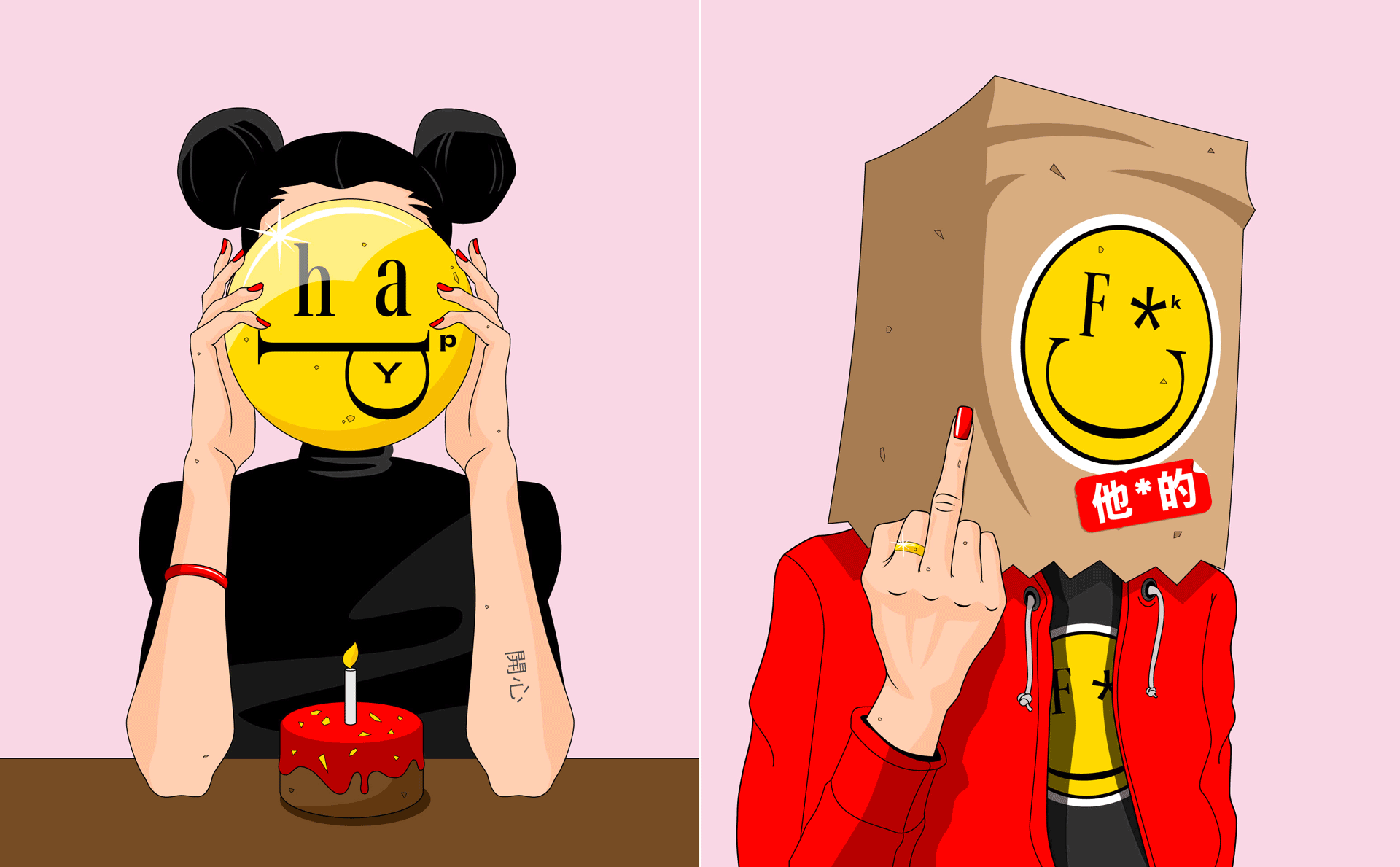
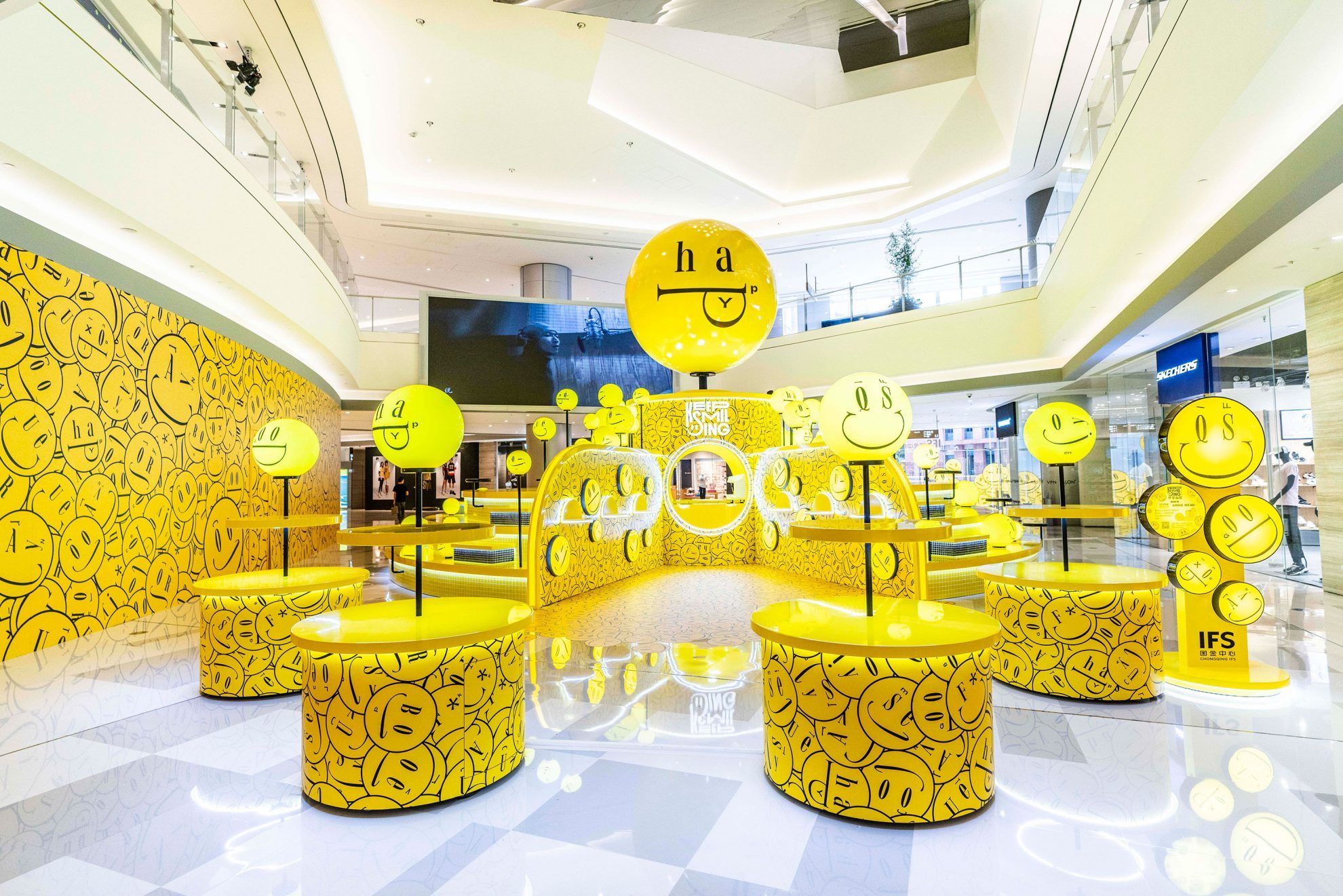
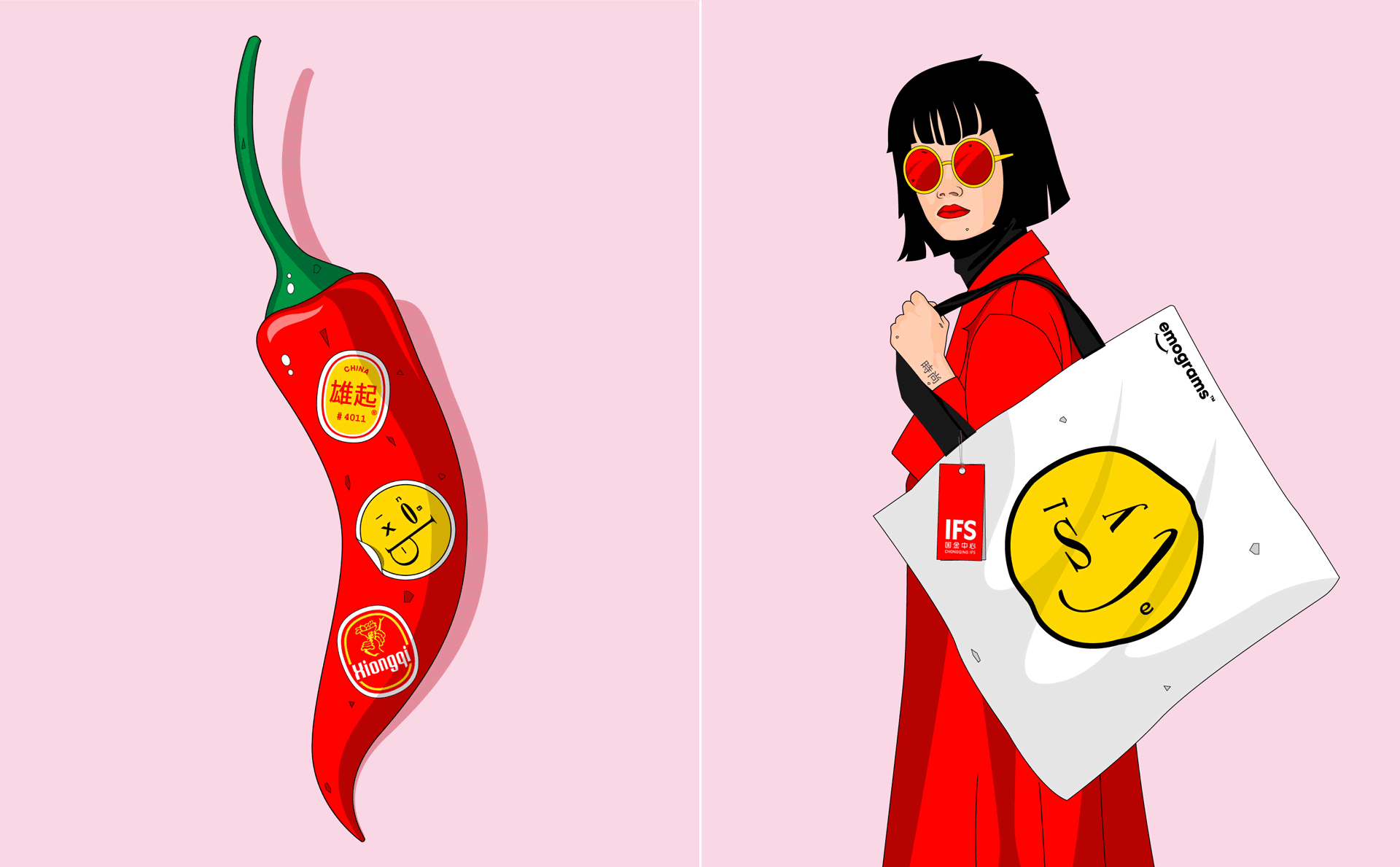
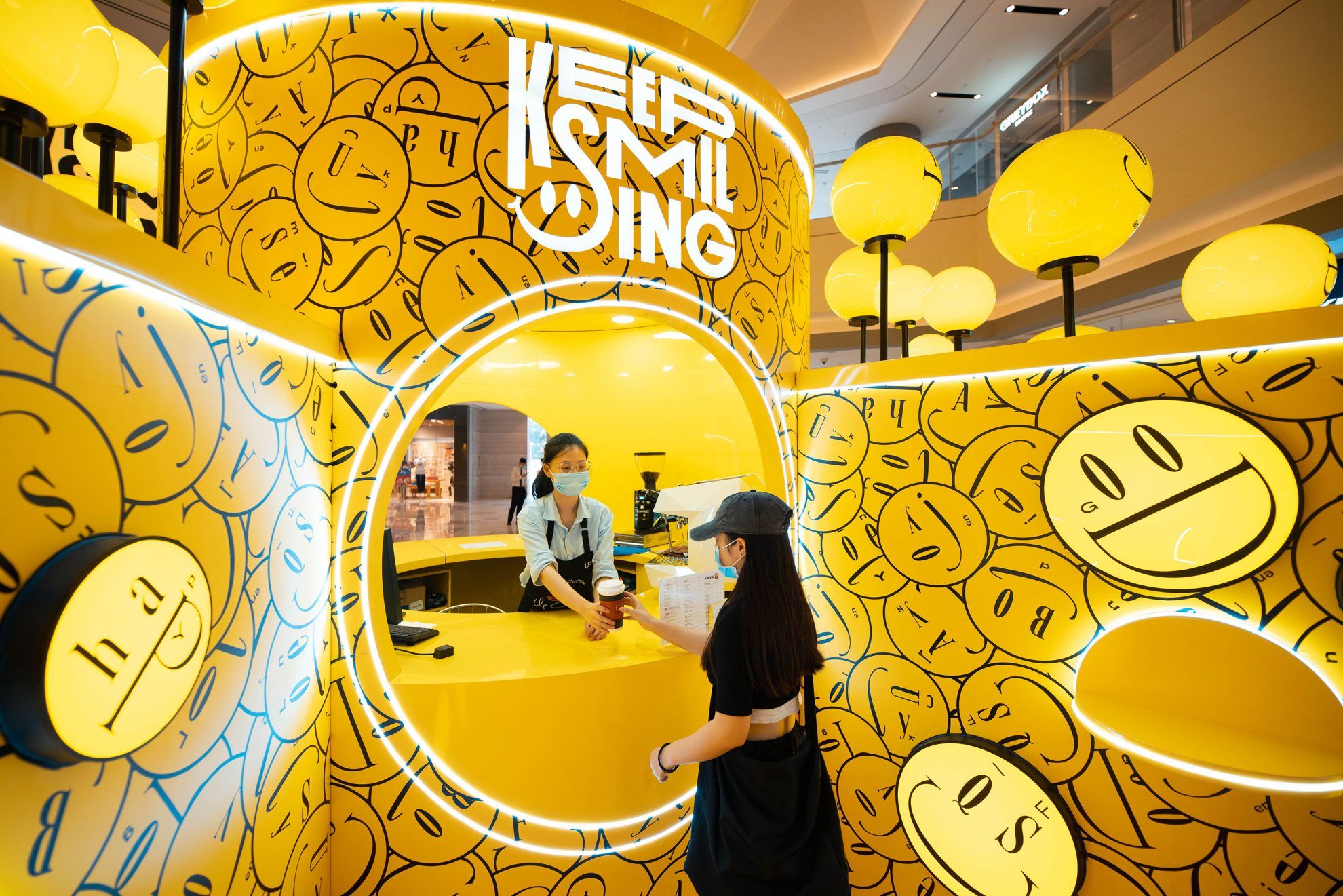
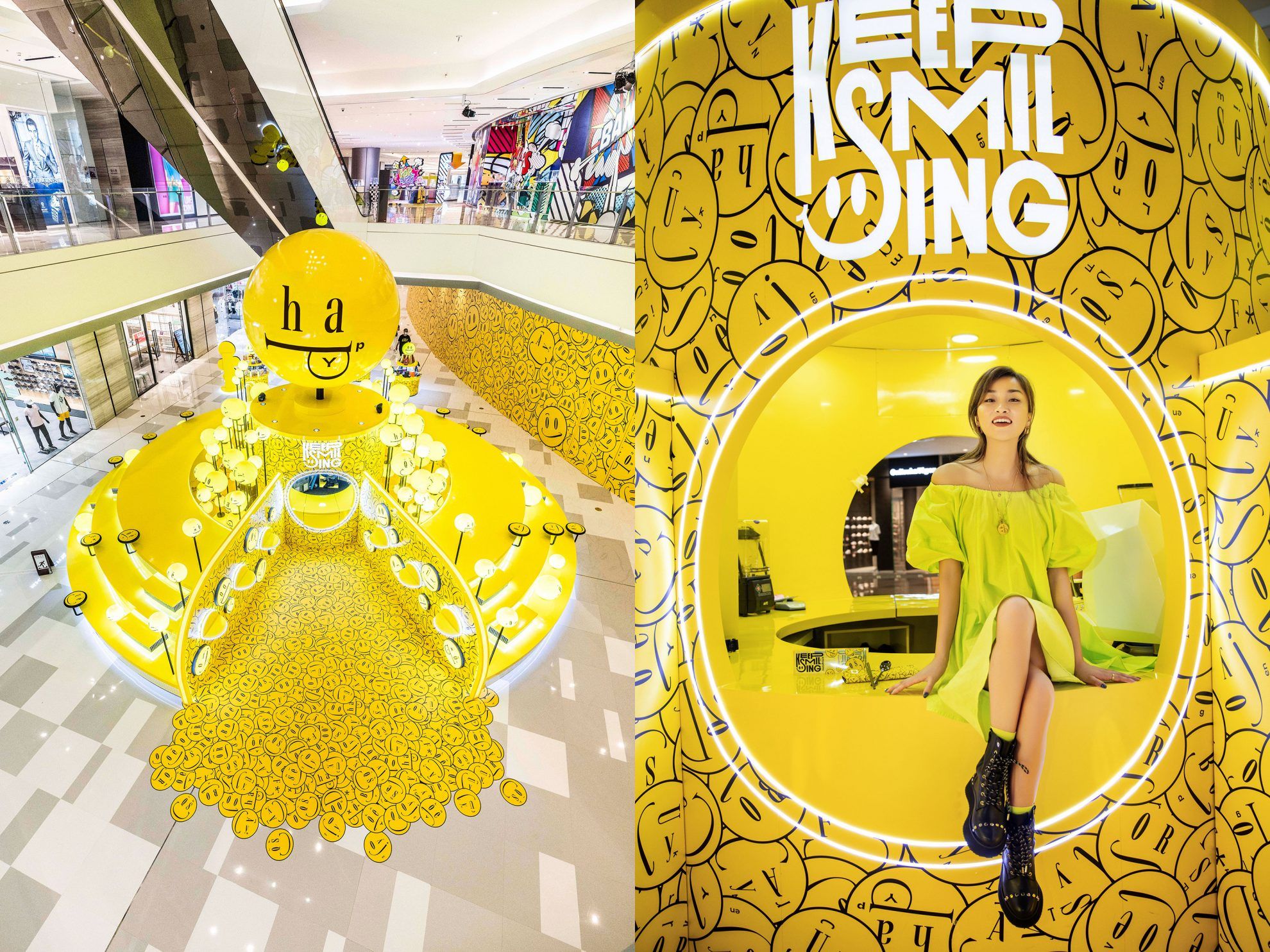
The installation was complemented by additional elements, and souvenirs like a Chinese dinner service with an emogram-patterned case, as well as a scarf or stress ball with emograms on them. The foam of the coffee served in the café also displayed emograms. The collaboration was also augmented into the digital space, resulting in a lot of AR content, which was available for testing in various ways. In addition, people could use emogram stickers on many platforms, including WeChat.
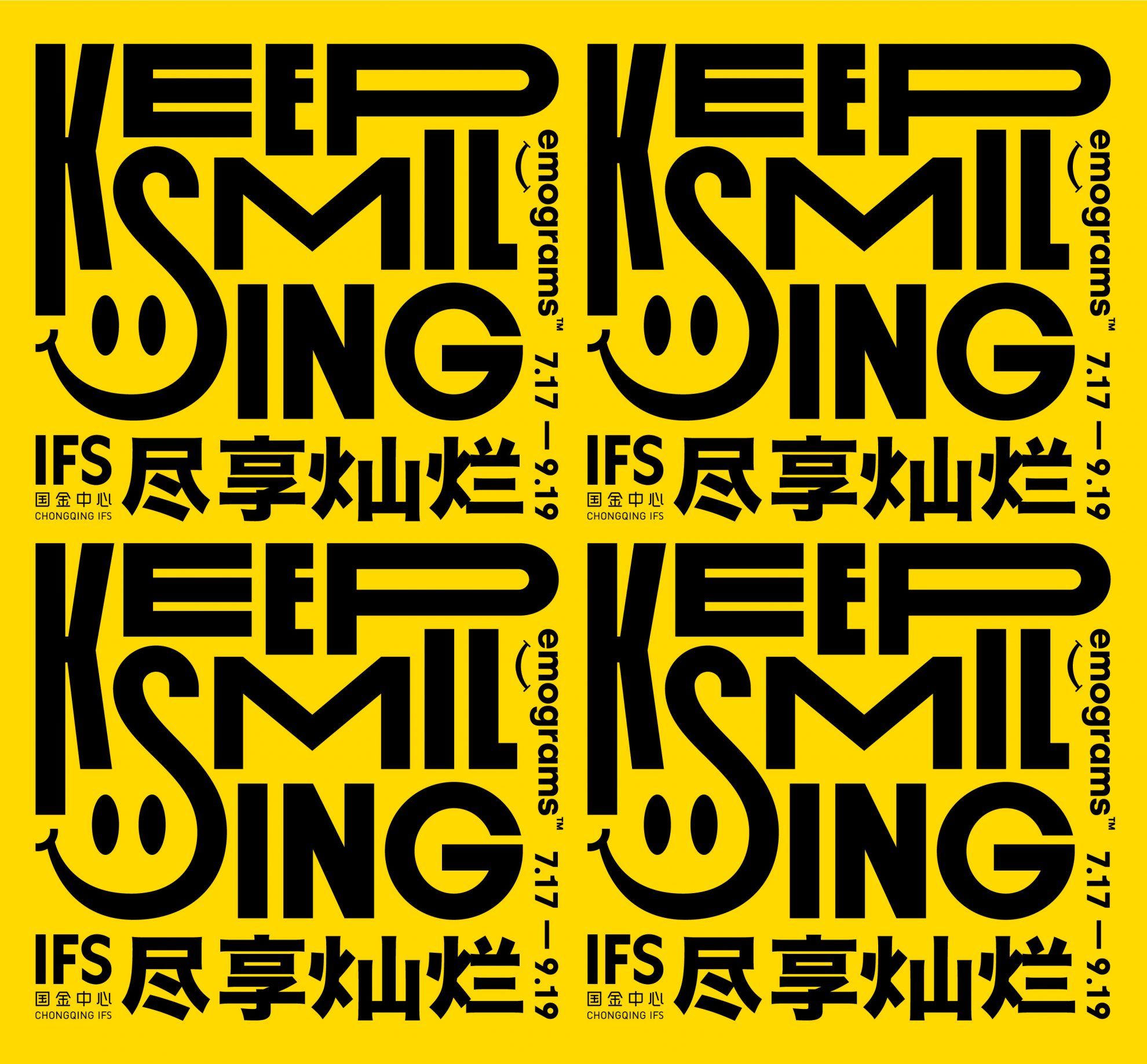

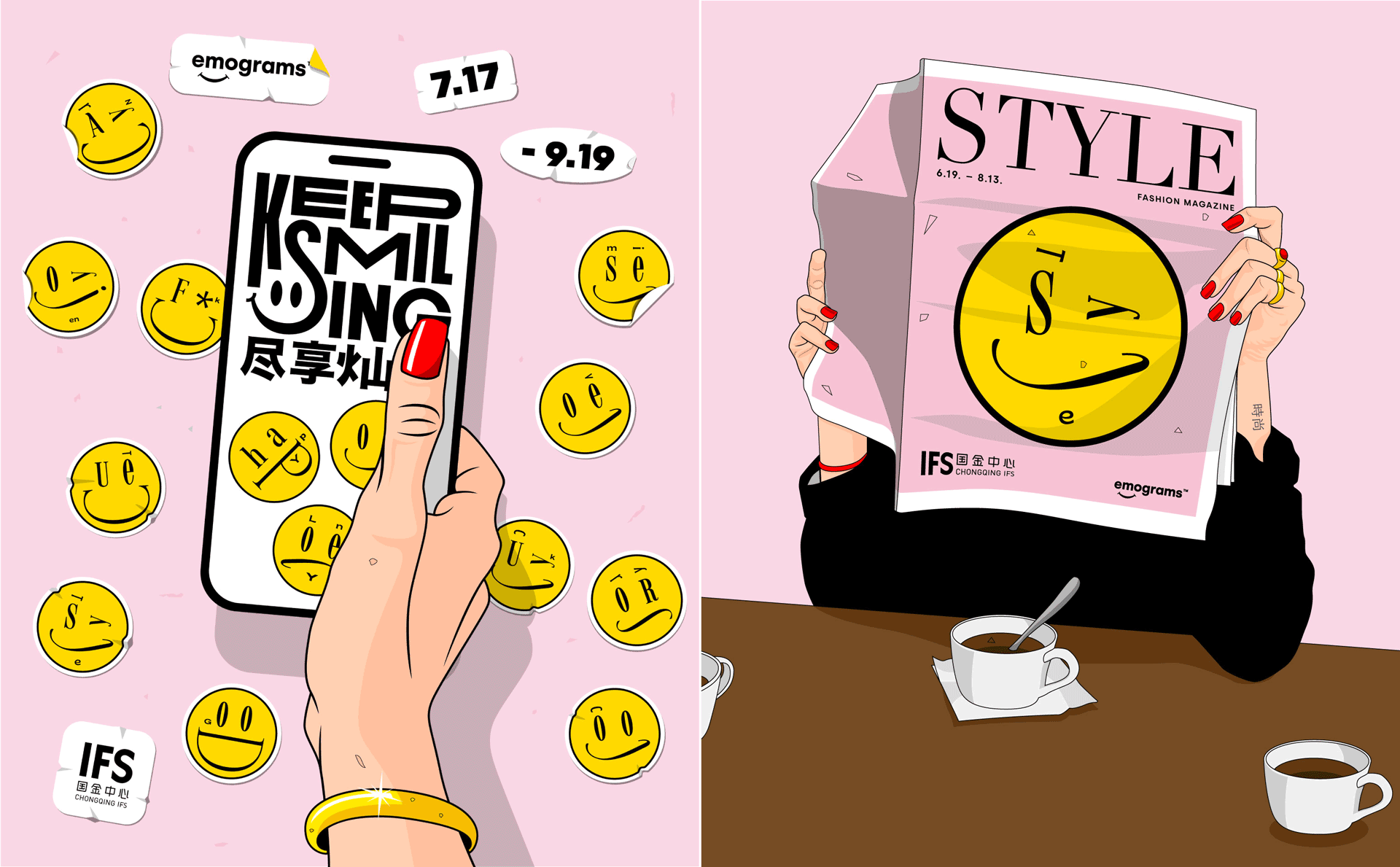
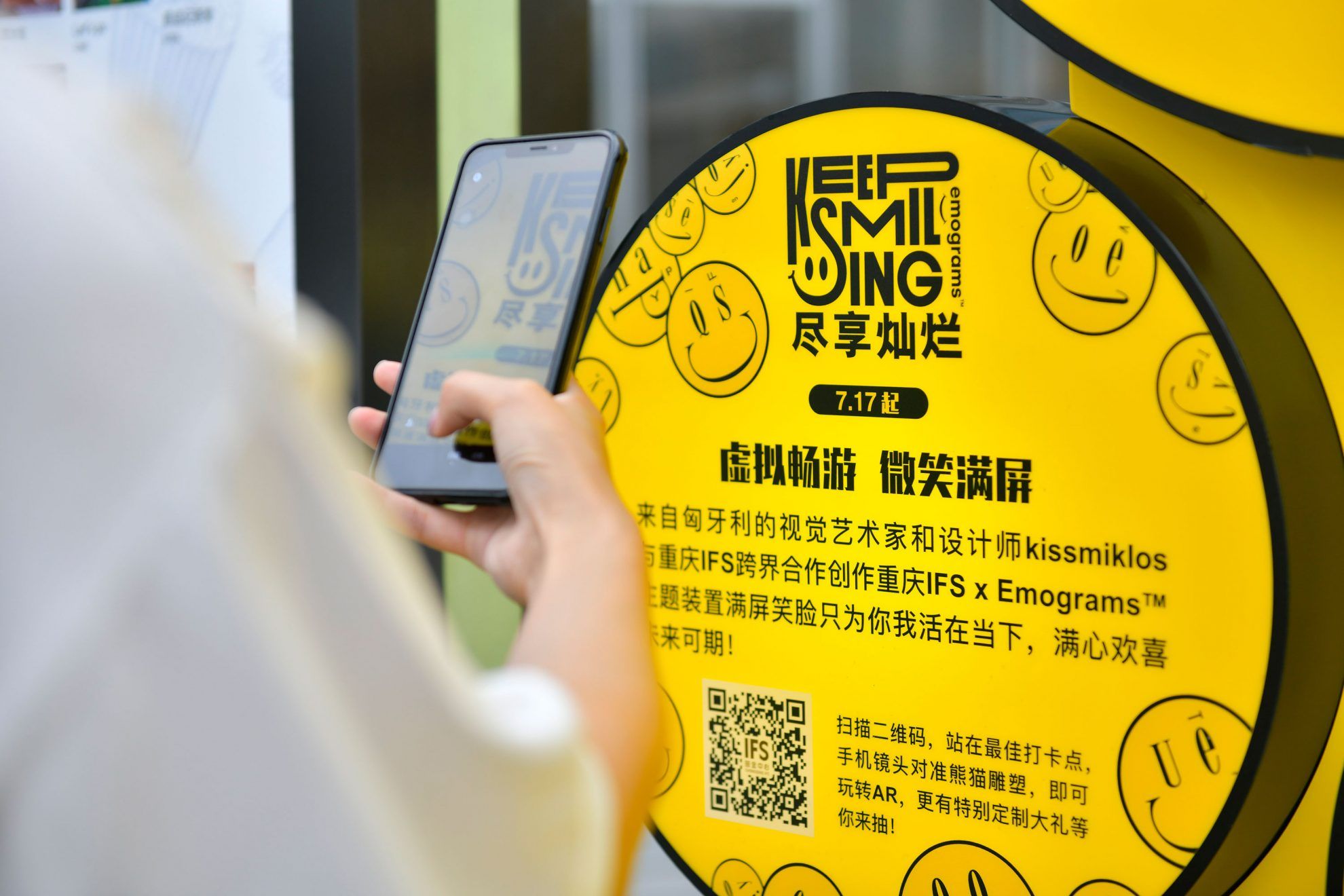
Even though the installations in Chongqing were only available until the middle of September, the good news is that the story of emograms does not come to an end just yet. Miklós says he has received several enquiries since then, mainly from Asian clients: “ I plan several works of art with these creatures, which I will continue to redesign so that they can display even lovelier and more interesting expressions.”
Go and explore Miklós’s further precise and conceptual projects on the website or Instagram account of the designer/visual artist!
Photos and videos: © CQIFS
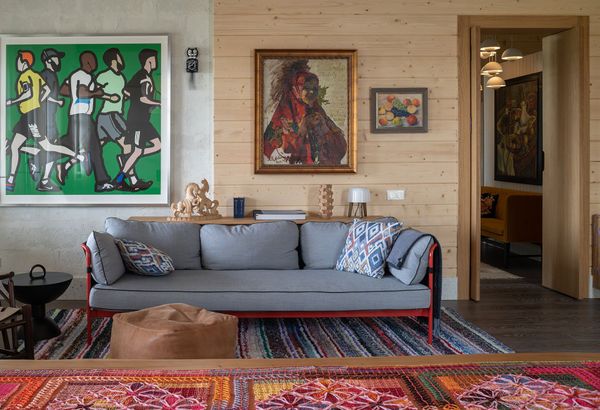
Folk art meets contemporary design in this old Russian dacha
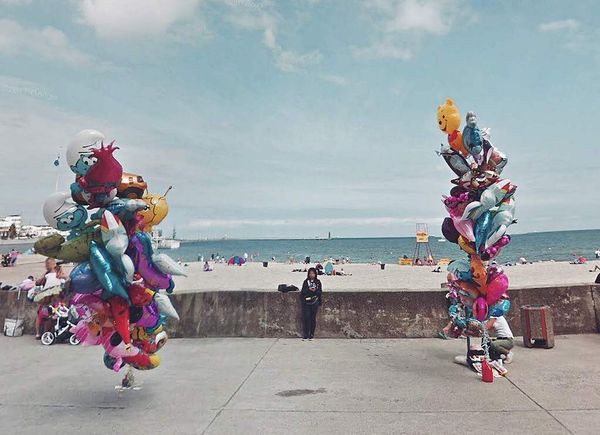
Polish everyday life on Instagram | poland.street.view
